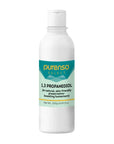
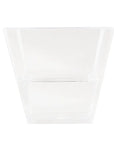
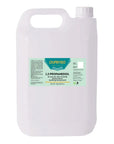

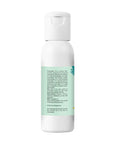
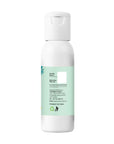
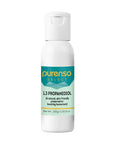
1,3 Propanediol/ Propanedial
| What is it? |
1,3-Propanediol (also known as Propanedial or Trimethylene Glycol) is a bio-based humectant derived from renewable corn sugar. It offers a natural, non-toxic alternative to petroleum-based glycols like propylene glycol, with the added benefit of non-sticky moisturization and skin-friendliness. Used across cosmetic and personal care formulations, it improves hydration, enhances preservation, and delivers a pleasant skin-feel in leave-on and rinse-off products. Whether you’re formulating lotions, serums, shampoos, or deodorants, 1,3-Propanediol helps draw moisture to the skin and boosts your product’s overall performance. |
| Appearance | Clear, colorless viscous liquid |
| Odor | Virtually odorless |
| Texture | In products it tends to be smooth, but too much can be draggy |
| INCI | Propanediol (1,3-Propanediol) |
| Purity | ≥ 99% |
| Usage rate | Typical use level 1-10% depending on the type of formula.
Add to the water phase of your formulation. It is heat stable and fully water-soluble. Can be used alongside other glycols or glycerin to adjust humectancy and feel. |
| Applications | Skin care, hair care, serums, toners, soaps |
| How to Work with It | Include it in your heated water phase or cold-process it if the recipe does not require heating. |
| Scent | Nothing very noticeable, slightly sweet |
| pH | 7 (neutral) |
| Solubility | Water-soluble, alcohol-compatible |
| Why do we use it in formulations? |
It’s a fantastic non-sticky humectant. We’ll often include it in products that we want to be super hydrating (facial lotions, winter products, etc.). We frequently choose it for inclusion in more watery products (things like facial mists, gels, and micellar waters) where a tacky skin-feel would be really noticeable, especially since it can help reduce the stickiness of glycerin. It helps add clarity and boosts both viscosity and flash-foam in surfactant products. It also increases the feeling of cleanliness on rinse-off. |
| Strengths | It’s a great non-sticky humectant that serves many other purposes. |
| Weaknesses | Can be harder to find than other humectants. |
| Alternatives & Substitutions | Vegetable glycerin is a decent alternative, though watch that you don’t include so much in the recipe that it starts to feel sticky. Propylene glycol would be a great alternative as they are very similar. |
| Key Features |
|
![]()
![]()
![]()
![]()
![]()
This product is a cosmetic raw material and is intended for external use only in cosmetic and personal care formulations. It is not intended for internal consumption or medicinal use.
- Do not ingest.
- Keep out of reach of children.
- Avoid direct contact with eyes.
All product images are for illustrative purposes only. Actual product color, texture, or packaging may vary from batch to batch.
Information provided on this website is for educational purposes only and should not be considered or interpreted as medical advice.
While we do not offer products for internal use, we source only high-quality, pharmaceutical or food-grade ingredients. Ingredient purity and performance are critical in cosmetic applications, just as they are in ingestible products.
Please note:
Just because two products have the same name or CAS number does not guarantee the same grade, purity, or effectiveness. Always choose trusted suppliers. Choose Purenso for premium-grade ingredients you can rely on.
FREQUENTLY ASKED QUESTIONS







